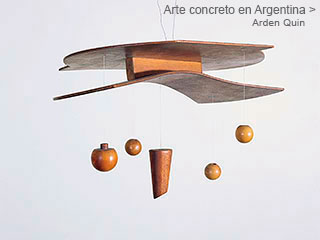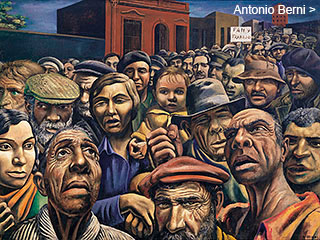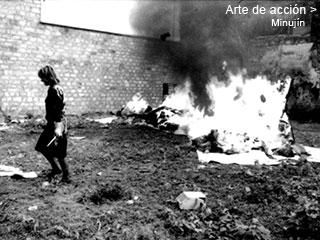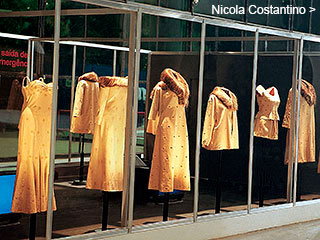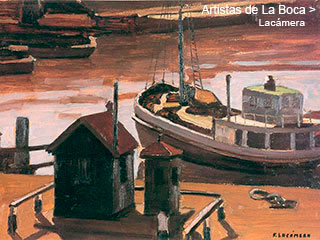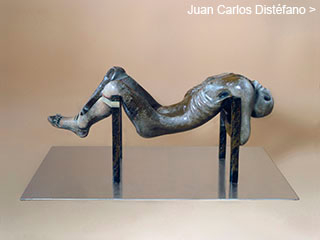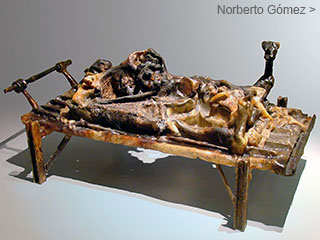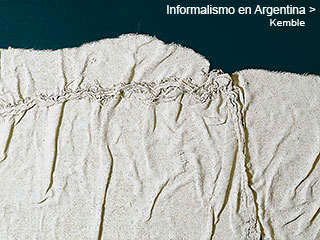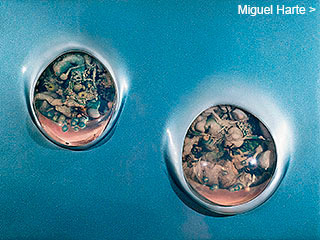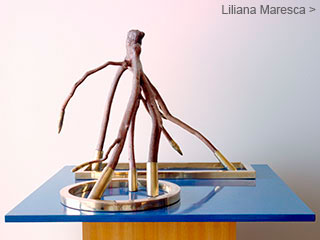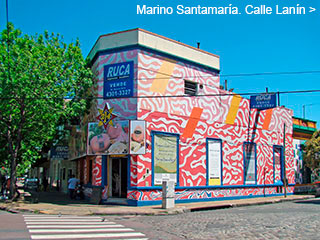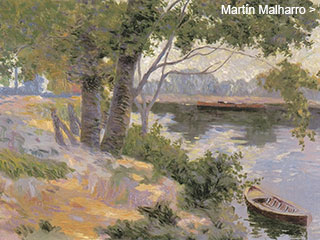Menú
Algunos dossiers
Juan Carlos
Distéfano
Distéfano
by
Adriana Lauria and Enrique Llambías
January 2003
January 2003
The dossier on Juan Carlos Distéfano spans from the time of his beginnings
as a painter to his recent works as a sculptor, a first for the CVAA. It covers
over forty years of his work and his commitment to art and reality. A special section offers a view on his work as a graphic designer, which he carried out mostly at the Di Tella Institute.
as a painter to his recent works as a sculptor, a first for the CVAA. It covers
over forty years of his work and his commitment to art and reality. A special section offers a view on his work as a graphic designer, which he carried out mostly at the Di Tella Institute.
2007
large-scale works. There he installs Direct Action II; the critic Fabián Lebenglik, after mentioning the impact it has, comments:
“It is a work that establishes strong links between politics and religion: a character in underpants is climbing an electricity post (on which the anarchist symbol replaces the acronym INRI) in order to cut the power lines, so that he will be able to fly a kite without obstacles. The sculpture, made by the artist a decade ago, quotes a poem by Oliverio Girondo: ‘“over-tired / of so much stagnant over-metaphor / and of the over-virgin innocence / and of so many perverse little instincts / and whorish little ideas / and whorish big ideas / and of the reflexes and hangovers of the dried-out circumstances.’” 
On 25 September at the Teatro Presidente Alvear, he is awarded the Premio Cultura Nación by the Secretaría de Cultura del Gobierno Nacional, also given to renowned artists such as Luis Benedit, Juan “Tata” Cedrón, Miguel Ángel Estrella, Eduardo Falú, León Ferrari, Gerardo Gandini, María Juana Heras Velasco, Gyula Kosice, Raúl Lozza, Luis Felipe Noé, Suma Paz, Horacio Salgán, Pía Sebastiani, Mercedes Sosa, Ljerko Spiller, and Clorindo Testa, among others. It is the first edition of this prize, which aims yearly to distinguish the career of persons or institutions who have made important contributions to Argentine culture.
more


